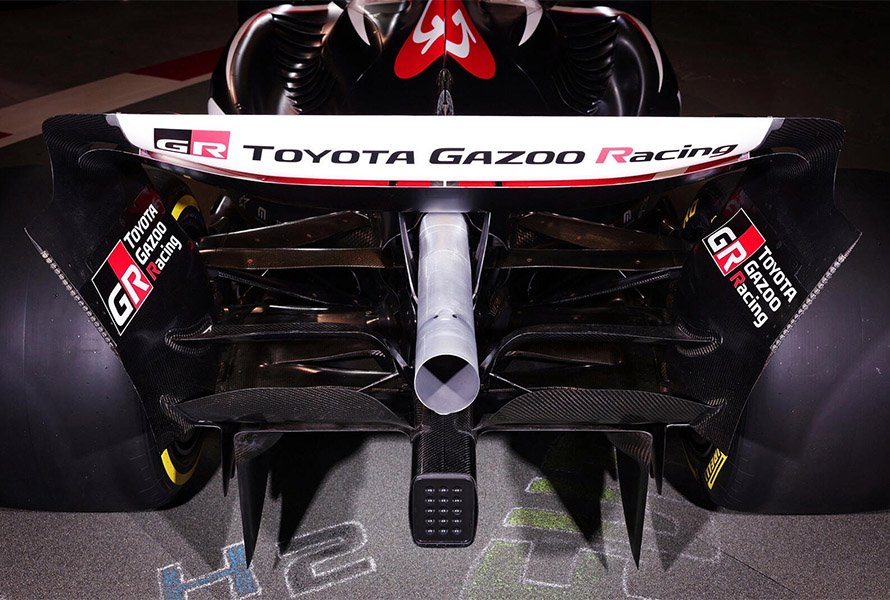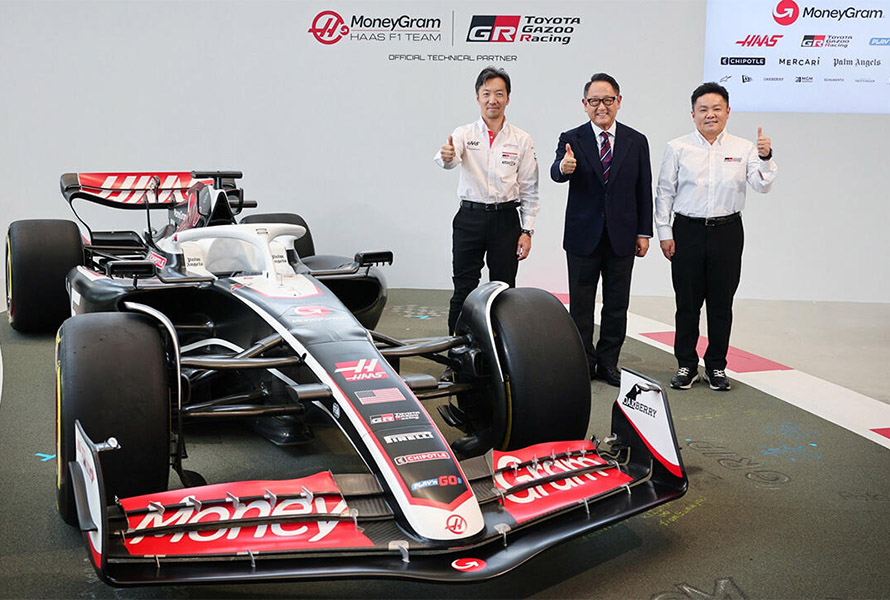
The path to the world’s fastest cars was previously slammed shut for Toyota’s racing drivers. Is it about to reopen?
On October 11, TOYOTA GAZOO Racing (TGR) and the MoneyGram Haas F1 Team (Haas), which has competed in Formula 1 since 2016, announced a technical partnership aimed at cultivating talent and developing vehicles.
On the motorsport genba, Toyota has long pursued a “driver-first” approach to carmaking that incorporates feedback from professional drivers into the development of production vehicles. Through this partnership with Haas, TGR’s young drivers, engineers, and mechanics will get a chance to take on the pinnacle of motorsports, with their accumulated expertise and the resulting technologies helping to make ever-better cars.
Dreams and aspirations
On the day of the announcement, the teams held a press conference at Fuji Motorsports Forest in Oyama, Shizuoka. GAZOO Racing Company President Tomoya Takahashi explained the three elements of “driver-first” carmaking: people (personnel development), pipeline (data analysis and utilization), and product (vehicle development).
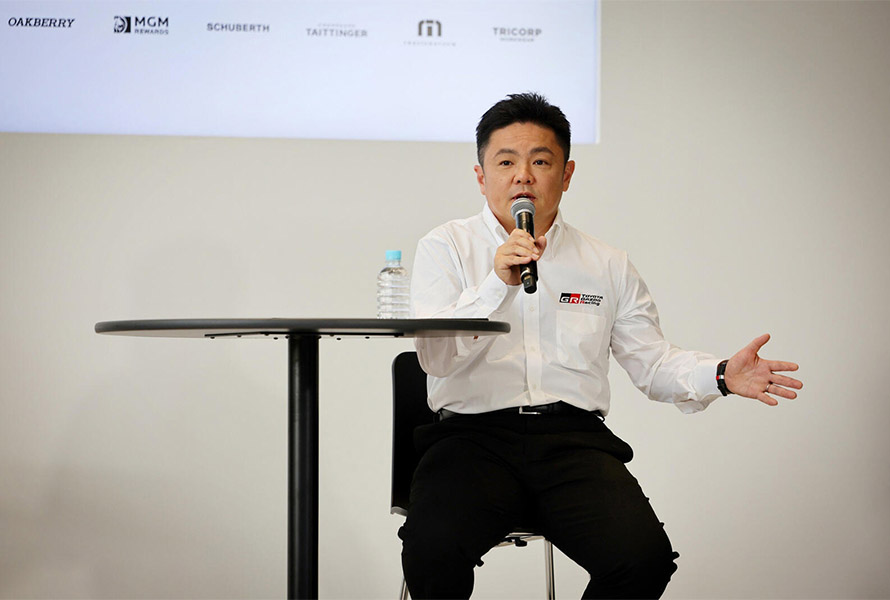
On the people front, Takahashi revealed that as part of this arrangement, TGR and Haas will establish a new “driver development program,” allowing TGR’s training drivers to gain F1 experience by participating in test runs. Similarly, engineers and mechanics will take part in developing racing car aerodynamics, simulating use under extreme conditions, as well as designing and fabricating carbon components.
At the same time, TGR’s engineers and mechanics will acquire expertise in instantly analyzing Haas’s vast troves of data during races and harnessing it to map out strategies in real-time, contributing to the Pipeline. The knowledge obtained through this process will be continually applied to Toyota’s vehicle development, the Product.
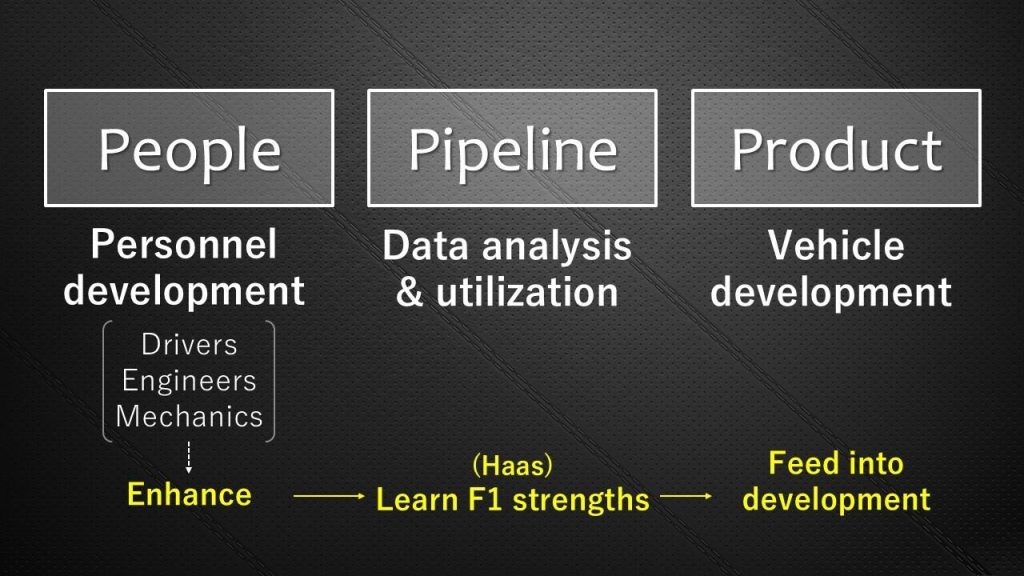
In terms of personnel development, Takahashi added, “The active roles of F1 drivers, engineers, and mechanics can provide children with dreams, aspirations, and goals. For TOYOTA GAZOO Racing, it is extremely important to demonstrate such hope to the children who will be responsible for the future of the automotive industry.”
On the other side of this partnership, Haas is currently in its ninth F1 season, sitting in seventh place out of ten teams after the Singapore Grand Prix in September.
At the press conference, Team Principal Ayao Komatsu described Haas as “both the youngest and the smallest team.” Having competed efficiently despite its size, the Haas team was seeking to push further up the rankings when this partnership was first mooted in February.
Haas Team Principal Komatsu
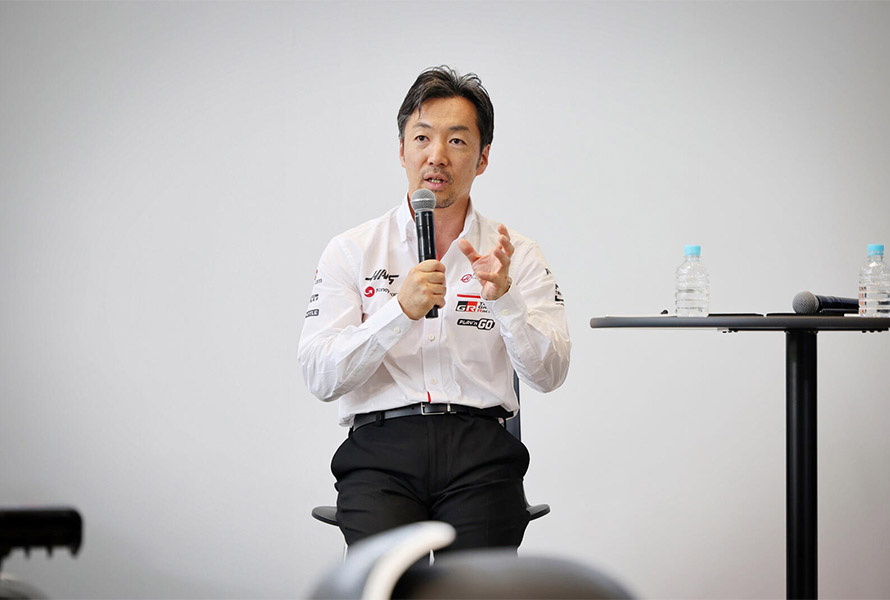
I believe that a major partnership such as this can only be built upon a relationship of respect and trust and a desire to work together towards a shared goal. Since we had plenty of that, I felt this could really work.
It was arranged that I would meet Chairman Toyoda, and I came to Tokyo before the Canadian Grand Prix in June.
Our visions were so closely aligned that it was hard to believe we were meeting for the first time. He is a very passionate person, and his ideas for the future, for inspiring Japan’s young people and the world of motorsports, shine through brightly.
These really resonated with what I want to accomplish through the Haas F1 Team, which was another green light.
I think these kinds of partnerships come about through personal connections, and that was the basis for this agreement. TGR possesses the manufacturing capabilities that we currently lack.
What we do have is the latest F1 know-how, while being short on people, facilities, and horsepower. These are things that TGR can contribute as we work together in various areas to improve the team and develop our personnel.
Formula 1 makes use of cutting-edge technologies, but the crucial element is the people. It is people who build things, who create simulation software, and who put them to use.
Even looking at the same data, each individual will make different decisions. We decided to pursue this partnership because both sides truly want to focus on developing people and creating a team whose efforts can inspire the next generation.
Morizo clears the air
Next to take the mic was Chairman Akio Toyoda, aka Morizo. He touched on the nature of racing drivers and the atmosphere that had pervaded Toyota’s pits since the company withdrew from F1 back in 2009.
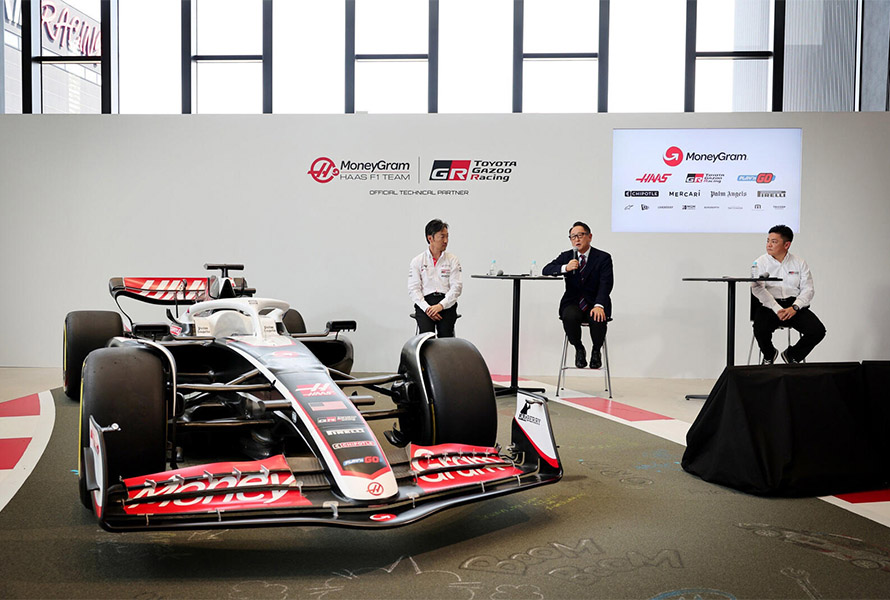
Although I’m not a professional racing driver, I’m surrounded by numerous professional racers who don’t mind driving with me.
Recently, among them are both drivers who grew up with Honda and racing drivers who have long been with Toyota.
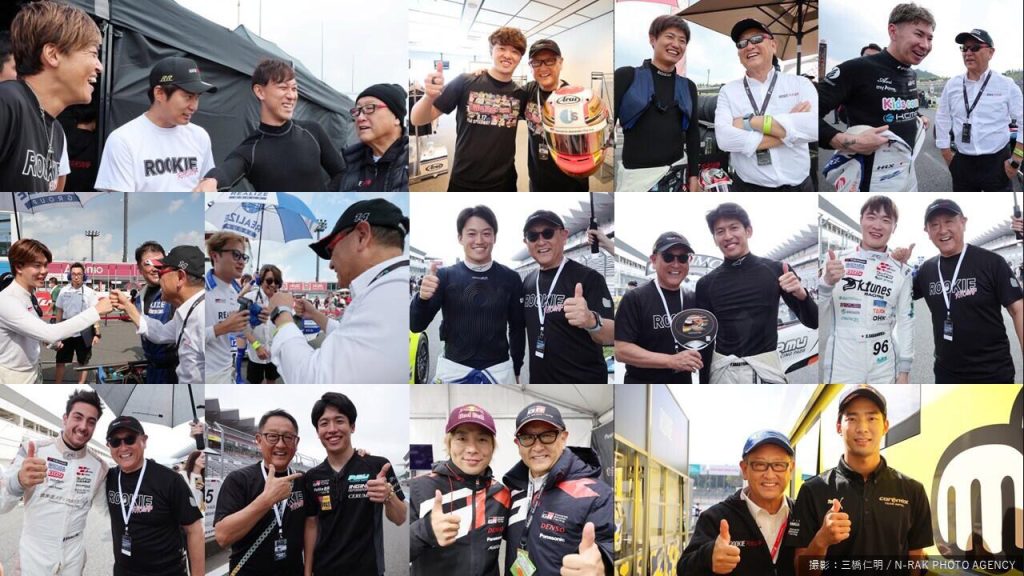
There’s something I sense when talking to professional racing drivers.
It’s that everyone wants to drive the world’s fastest cars.
I think that’s the way drivers are.
That said, I’m the person who quit F1. So, I think that drivers were never able to frankly talk about it in front of me. It was like there was always this inhibiting atmosphere in our pit.
In January this year, I said in front of everyone that I had finally gotten back to being an ordinary guy who loves cars.
I think that, somewhere deep in his heart, that ordinary older car-loving guy Akio Toyoda had always regretted having blocked―by pulling out of F1―Japanese youths’ path toward driving the world’s fastest cars.
That said, with the media watching my every step, I dare to add that I still believe my decision as the president of Toyota to withdraw from F1 was not wrong.
Not very long ago, I had the opportunity to speak with Team Principal Komatsu. He himself is someone who has carved out big dreams. But behind him was his father, who always allowed him to chase those dreams freely.
Both Mr. Komatsu and I have come to share the same desire to be a “father” who allows children to chase their dreams. Mr. Komatsu, I owe you my thanks.
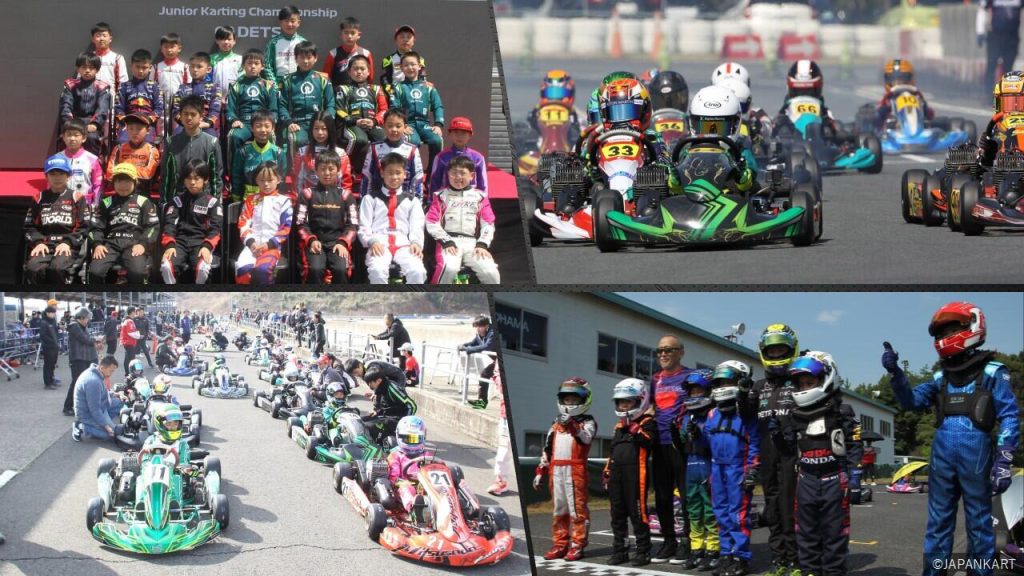
The Super Formula drivers over there (Fuji Speedway), both the Toyota and the Honda drivers, all grew up as kids driving karts.
I believe there are many children all over the country who, admiring them, also drive karts. I think that, together with Mr. Komatsu and his team, we need to increase the number of such children.
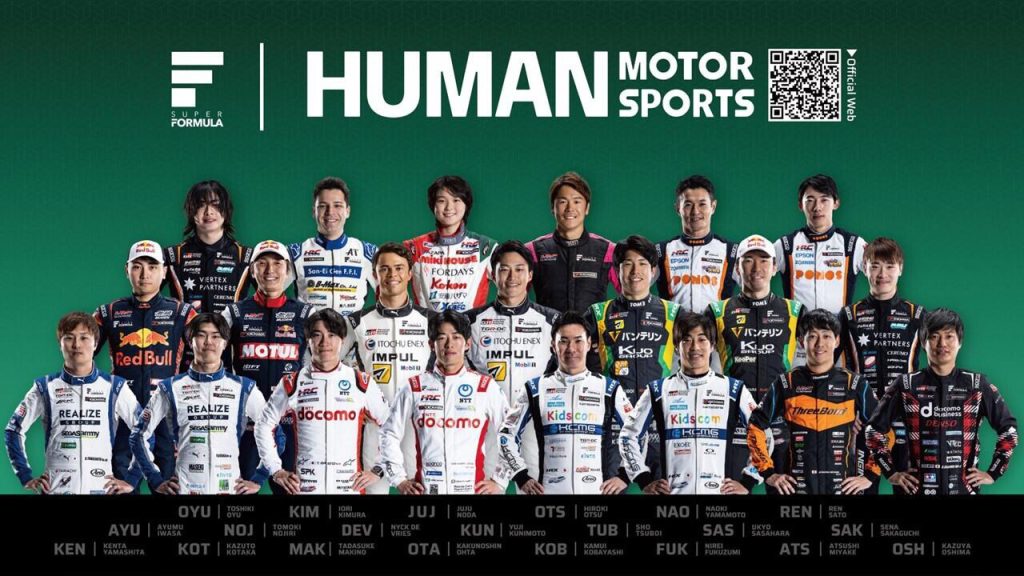
But before that, I would like to see the day when a Super Formula driver grips the steering wheel of the world’s fastest car.
Mr. Komatsu and all the members of Haas, I look forward to working with you for the sake of the Japanese motorsports world.
And….to the media!
Please make sure that tomorrow’s headlines don’t read: “Toyota Finally Returns to F1”. Rather, it would be great to see headlines and articles that inspire Japanese children to dream of the possibility that they, too, could one day drive the world’s fastest cars.
This wasn’t the first time that Morizo had spoken his mind about the F1 withdrawal. In September 2023, when Ryo Hirakawa became a McLaren reserve driver after spending his entire career with Toyota-affiliated teams, Morizo shared the following comment:
“As a driver myself, even though no one ever mentions it when I speak with other drivers, I could sense these reservations between us.”
On that occasion, he made a distinction between his positions as Toyota’s chairman and driver Morizo. This time around, an “ordinary car-loving guy” was added to the mix.
Now that this “ordinary car-loving guy” is able to help racing drivers achieve their dreams, the inhibiting atmosphere may be starting to clear.
Setting the stage for a starring role
When answering questions from reporters, Morizo again spoke openly about racing drivers and his first meeting with Team Principal Komatsu.
Last September, the Japanese Grand Prix returned to the country for the first time in 14 years. When you attended, Japanese F1 and Suzuka fans gave Morizo a very warm reception. Did their support have any influence on this decision?
Morizo
Walking around Suzuka, there were actually four of us—myself, Hirakawa, Kamui Kobayashi, and Kazuki Nakajima. But the crowd only called out Morizo’s name.
I turned to the other three and said, “What’s happening with you guys? I’m not even a racing driver.”
Then it occurred to me: the guys behind the wheel need to play more of a starring role, and I need to create the stage where they can do that.
It was the same when we went to the F1 venue. As you all know, I am the guy who pulled Toyota out of F1, so I honestly was not expecting to be greeted by such a welcoming atmosphere.
Since we don’t have a path to the world stage, that made me all the more eager to find a place where young people can learn how to pursue their dreams.
Then, this partnership came about. When we were at Suzuka, neither of us had the slightest inkling that we would be here doing something like this today.
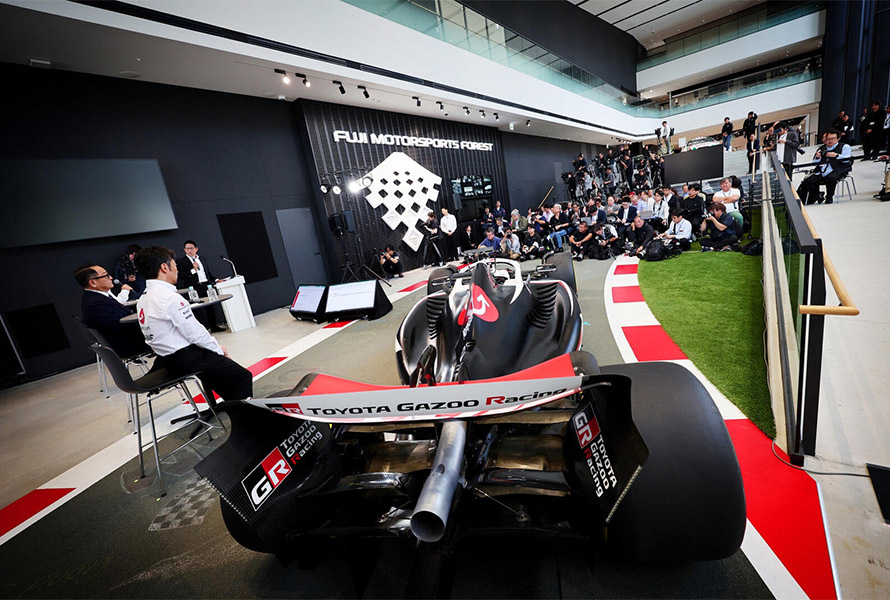
Since Toyota’s involvement won’t be a full re-entry into F1, how do you plan to incorporate F1 technologies into production cars?
Morizo
I am a carmaker. Ever since I became president, I’ve always emphasized the same thing: let’s make ever-better cars. After 14 years leading the company, I have dealers telling me that, across Toyota’s full lineup, our products have turned into the kinds of cars they want to have in their showrooms.
I think our GR Company vehicles are the result of ever-better carmaking rooted in motorsports.
It’s not enough to just pave the way for drivers alone; motorsport also needs engineers to make cars, mechanics to support races, and various other staff.
Haas is, to put it one way, an extremely compact team. Despite its size, it continues to take on the big guys.
I felt that such a team would offer a tremendous learning environment, which is why I decided to take the first step.
Even so, this will no doubt take time. It takes time for people to grow and for the world to change.
To begin with, I hope that more people will show an interest in motorsports and respect for F1, the pinnacle of racing. We look forward to your continued support for many years to come.
Why do you believe that withdrawing from F1 (in 2009) was the right decision?
Morizo
I feel that, back then, Toyota was more focused on becoming a bigger company than making ever-better cars.
As the president, I decided that activities such as F1 didn’t really fit a company seeking to become larger by pursuing sales and profits.
Today, we have transformed into a company focused on making ever-better cars and motorsport-driven carmaking. We need the people who can make that happen.
Because we haven’t been involved in the sport (F1) for a long time, we may be starting from zero, or perhaps even worse, but I hope you will support Toyota’s commitment to putting people first.
Like old friends
Morizo and Team Principal Komatsu, what resonated with each of you in that first meeting? What words gave a sense of the other’s passion, and what left a strong impression?
Morizo
To be honest, I couldn’t believe it was our first time meeting. I felt like we had already met and talked somewhere before.
I don’t think either of us even said, “Nice to meet you.” It was like the conversation just started rolling the moment we met.
Truthfully, for me, it felt like catching up with someone who I’d been talking to for a long, long time and just chatting about what we’re going to do.
Team Principal Komatsu
Exactly the same for me. It’s not like I hadn’t known about Chairman Akio Toyoda before we met, but…
Morizo
What image did you have of me?

Team Principal Komatsu
In my mind, Toyota seemed like a very large, strait-laced company.
Morizo
A bureaucratic pain in the neck?
Team Principal Komatsu
A place with hefty inertia, where getting anything done takes time.
As already mentioned, looking on from afar, this was the person who quit F1. I couldn’t understand why you would quit!
We needed to create a motorsports culture, yet the Japanese manufacturers kept coming and going. Even at our first meeting, I brought that up and told Morizo that I really wanted it to stop.
We threw off all reserve, and I was able to ask him frankly, “Why did you do that (withdraw from F1)?” That’s what it was like. You wouldn’t imagine that happening, normally.
It really felt like we had known each other a long time, and we had a wonderful conversation. I honestly thought, what an honor to be able to work with someone who is driven by such inspirations and ideas.
I feel very fortunate to have had such an encounter in my life. Now, the only thing left is to make the most of it, and I’m determined to ensure that we do.
Perhaps it was inevitable that two individuals who are used to taking on the world would hit it off. Cars bearing the TOYOTA GAZOO Racing name will take to the track from the upcoming United States Grand Prix, to be staged on Haas’s home soil in October.
